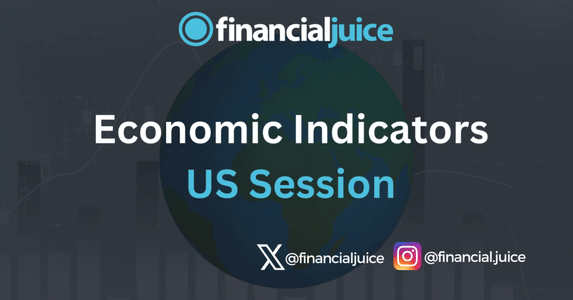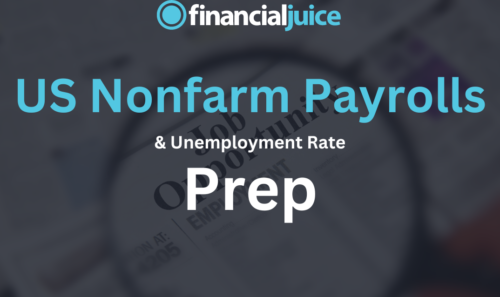
Week Ahead: Economic Indicators (US)
Hey, Traders!
For the June 17th week, here is a list of all of the major economic indicators being released during the US Session, with a brief synopsis of what they represent and what to possibly expect from the markets in reaction.
Tuesday 18th June
08:30 ET
US Retail Sales for May
US Retail Sales is a monthly measure of the total receipts of retail stores in the United States, reported by the Census Bureau.
It reflects consumer spending on goods such as food, clothing, electronics, and automobiles.
This indicator is crucial because consumer spending drives a significant portion of the US economy.
Changes in retail sales can signal shifts in economic activity, consumer confidence, and spending behavior.
An increase in retail sales typically indicates economic growth, while a decrease may suggest an economic slowdown.
What to Expect
Consumer spending, some of which is made up of retail sales, makes up a large portion of US economic growth.
If retail sales come in higher than expected, you could expect to see some weakness in US stocks and strength in the dollar, as it is seen as an upside inflation risk, which could support the higher for longer rate narrative.
The opposite is also true, if it comes in lower than expected, it could cause strength in US stocks and weakness in the dollar.
Wednesday 19th June
13:30 ET
Bank of Canada Meeting Minutes
The Bank of Canada Meeting Minutes are detailed records of the discussions and decisions made during the Bank’s policy meetings.
These minutes provide insights into the economic analysis, considerations, and rationale behind the Bank’s monetary policy decisions, including interest rate changes.
They offer transparency into the Bank’s views on economic conditions, inflation, employment, and other factors influencing their policy stance.
The release of these minutes helps investors, economists, and the public understand the Bank’s future policy directions and economic outlook.
What to Expect
Market participants would look for indications of forward guidance from the Bank of Canada in this text release.
More hawkish comments, that imply that rates may be on hold for longer than expected after the initial Bank of Canada cut at this meeting, could cause strength in CAD and weakness in Canadian stocks.
More dovish comments, that lean into the idea of more interest rate cuts than expected this year, could cause the opposite.
Thursday 20th June
08:30 ET
US Housing Starts for May
US Housing Starts is a monthly economic indicator that measures the number of new residential construction projects that have begun during the month.
Reported by the US Census Bureau, it includes data on single-family homes, townhouses, and apartment buildings.
This metric is important because it reflects the health of the housing market and provides insights into broader economic conditions.
An increase in housing starts suggests economic growth and consumer confidence, while a decrease can indicate economic slowdowns and potential issues in the construction industry.
What to Expect
Housing starts are unlikely to cause a meaningful market reaction on its own, without a large deviation.
Having said that, a higher-than-expected Housing Starts number could indicate stronger consumer sentiment, as it points to more demand for housing, which is the largest investment the average consumer will make.
Higher consumer sentiment could be seen as an upside risk to inflation, and/or a reduction in recession fears.
US Weekly Initial & Continued Jobless Claims
The US Weekly Initial and Continuing Jobless Claims report provides data on the number of individuals who have filed for unemployment benefits for the first time (initial claims) and those who continue to receive unemployment benefits (continuing claims) in the United States.
These figures offer insights into the labor market’s health, indicating trends in job losses and unemployment rates.
What to Expect
If initial and continuing jobless claims come in higher than expected, this shows that there are more people filing for unemployment benefits in the US.
This could lead to strength in US stocks, and weakness in the dollar because it could be a downside risk to inflation.
The opposite could also be true if it came in lower than expected.
11:00 ET
US Weekly EIA Crude Oil Inventories
The weekly Energy Information Administration inventories report provides data on the levels of crude oil, gasoline, and distillate inventories in the United States.
It’s an indicator of supply and demand dynamics in the oil market, influencing oil prices and trading decisions.
What to Expect
If inventories come in higher than expected, this could mean there is less demand and higher supply in the energy sector.
This could then lead to weakness in Crude Oil.
The opposite could also be expected if it comes in lower.
Friday 21st June
09:45 ET
US S&P Manufacturing & Services PMI June Prelim
The US S&P Manufacturing & Services Purchasing Managers’ Indices are composite economic indicators derived from surveys of purchasing managers in the manufacturing and services sectors. It measures the prevailing direction of economic trends in these sectors by assessing factors such as new orders, production, employment, supplier deliveries, and inventories.
A PMI reading above 50 indicates expansion in economic activity, while a reading below 50 suggests contraction. It provides insight into the health and direction of the US economy, helping analysts and policymakers make informed decisions.
What to Expect
If the PMIs come in higher than expected, generally, this could mean there is more demand for goods and services. This could lead to higher consumer spending, which could be an upside risk to inflation and feed the ‘higher for longer’ rate narrative. If realized, the dollar could see some strength, while US stocks could see some weakness. If it comes in cooler than expected, the opposite could be expected.
10:00 ET
US Existing Home Sales for May
US Existing Home Sales is a monthly report released by the National Association of Realtors (NAR) that measures the number of previously owned homes sold in the United States.
This indicator provides insights into the health of the housing market and consumer demand. An increase in existing home sales suggests a strong housing market and consumer confidence, while a decrease may indicate potential economic challenges.
This data is important for understanding trends in the real estate market and its impact on the broader economy.
What to Expect
While this data is unlikely to move the markets on it’s own without a large deviation from expectations, it is still a good gauge of consumer sentiment, as a large amount of sales in existing homes indicates that consumers are in a position where they are able to make large investments.
It can also be used to paint a picture of other sectors, like manufacturing, housing services, and construction spending.





